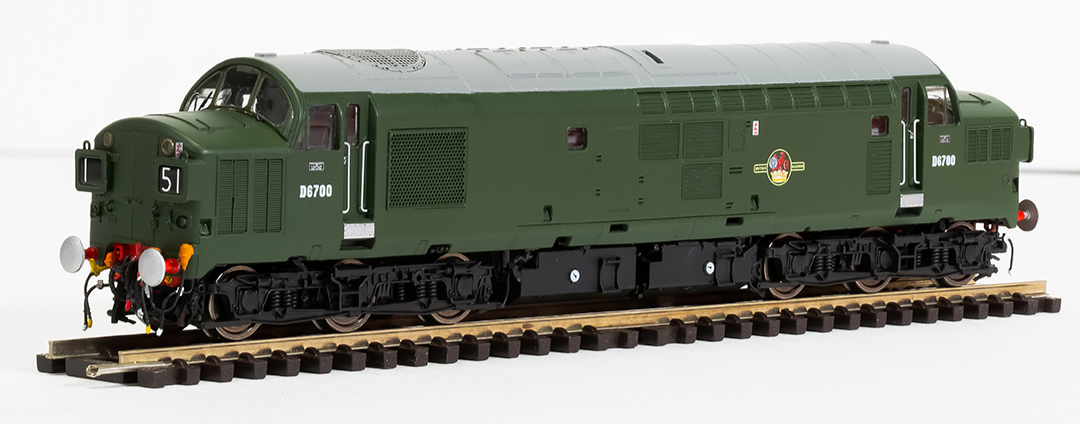Hornby TT3036M Class 37 BR Co-Co No.D6700 Diesel Electric Locomotive


Product Details
| SKU | HOR-TT3036M |
|---|---|
| Vendor | Hornby |
| Categories | Best selling products Class 37 Locomotives Diesel Locomotives Era 9 Hornby Hornby Due Soon Hornby TT:120 Q1 2025 Announcements Locomotives New products Pre-Orders TT:120 Scale |
| Scale | TT:120 Gauge |
| Share | |
| Features |
|
Product Description
Expected Delivery Q4 2025 (Subject to Change at Manufacturer's Discretion).
D6700 was the first member of the English Electric Type 3s (later Class 37) to be built and, as such, was secured for preservation upon its retirement. It is now part of the National Collection but is currently on loan at the Great Central Railway, where it is in operational condition.
It emerged from Vulcan Foundry at Newton-le-Willows in December 1960 with split-headcode panels and was initially allocated to Stratford depot in East London. Its BR career took it to Haymarket (Edinburgh), March, Thornaby and Gateshead. Originally in all-over BR green, it was repainted into BR blue and yellow ends in June 1969 and received its TOPS number 37119 in February 1974.
In March 1988, it was reclassified to sub-class 37/3 and among the changes made, its fuel capacity was increased, utilising the space from the redundant steam-heat boiler and it became No. 37350. After almost 39 years, it was withdrawn in December 1999 after seeing out its later career back ‘home’ at Stratford depot.
The model is presented in the livery it entered service in 1960, in all-over green – no yellow warning panels – and the BR ‘ferret and dartboard’ logo, the condition to which it has been restored in preservation.
Given the designation Class 37 under the TOPS classification system rolled out by British Railways in 1973, 309 examples of what until then had been known as English Electric Type 3s, were built between 1960 and 1965.
These locomotives had two bogies, each with six powered wheels, referred to as Co-Co, and a power output of 1,750hp (1,305kW) from their turbocharged V12 diesel engines.
They were designed for freight work, but also for passenger duties on secondary routes, for which many of the class were fitted with steam-heat boilers to warm the passenger coaches. They had relatively low gearing, which was ideal for moving heavy freight trains, yet they were also capable of speeds of 90mph (140km/h) which was equally useful on passenger trains.
Originally numbered D6700-D6999 and D6600-D6608, under TOPS they became Nos. 37001-37308. Although it was an English Electric design and built at its Vulcan Foundry at Newton-le-Willows, a number were also built by Robert Stephenson and Hawthorns in the north-east, the company having become part of English Electric in 1955.
The class 37s were extremely versatile machines and saw service across the whole of the UK, apart from on the Southern Region south of London. In the 1980s, they were selected as a standard Type 3 and many were given overhauls to extend their working lives into the 1990s.
Fitted with Electric Train Heating (ETH) several examples went to Scotland to work passenger services on the West Highland Line and also the Far North Line, while others were deployed on Welsh Marches trains, the Wherry Line in Norfolk, South Wales, the West Country and the Cumbrian Coast line.
Some were given replacement Mirrlees or Ruston engines for a proposed Class 38, but in the event were given the sub-classification 37/9. The locomotives’ relatively low-axle loading for their weight and power left it as the only main line type available in significant numbers for lines with weight restrictions.
Many are still in use to this day, used mainly on freight, maintenance/engineering trains and empty stock movement, with a growing number finding their way onto charter work with operators such as West Coast Railways. As of 2024, 65 examples were still registered for main line work, plus there are more than 30 that have been preserved in the UK.

